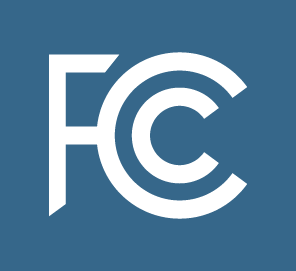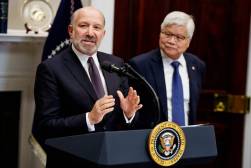FCC updates E-rate broadband program

The Federal Communications Commission on Friday initiated a thorough review and modernization of the E-rate program, which helps deliver broadband service to the nation’s schools and libraries.
The effort is built around three key areas:
- Increased Broadband Capacity: To ensure schools and libraries have affordable access to 21st century broadband, the Commission seeks comment on a range of proposals to focus funds on supporting high-capacity broadband, including: simplifying rules on fiber deployment to lower barriers to new construction; prioritizing funding for new fiber deployments that will drive higher speeds and long-term efficiency; phasing out support for services like paging and directory assistance; ensuring that schools and libraries can access funding for modern high-speed Wi-Fi networks in classrooms and library buildings; and allocating funding on a simplified, per-student basis.
- Cost-effective Purchasing: To maximize the cost-effectiveness of E-rate purchases, the Commission seeks comment on how to increase consortium purchasing to drive down prices; how to create other bulk buying opportunities; how to increase transparency of prices and spending; how to improve the competitive bidding processes; and a pilot program to incentivize and test more cost-effective purchasing practices.
- Streamlined Program Administration: To streamline the administration of the E-rate program, the Commission seeks comment on speeding the review of E-rate applications; providing a streamlined electronic filing system and requiring electronic filing of documents; increasing the transparency of USAC’s processes; simplifying the eligible services list and finding more efficient ways to disburse E-rate funds; reducing unused E-rate funding; and streamlining the E-rate appeals process.
The initiative is the first comprehensive update of the E-rate program since 1997 when it was established. To date, the program has successfully connected virtually all U.S. schools and libraries (97% of U.S. classrooms) to the Internet.
Over the past 15 years, support provided by the E-rate program has helped revolutionize school and library access to modern communications networks, but the needs of schools and libraries are changing.
In schools, high-speed broadband access means an increasingly interactive and individualized learning environment and expands school boundaries through distance learning applications. In libraries, high-speed broadband access provides patrons the ability to apply for jobs; interact with federal, state, local, and tribal government agencies; engage in life-long learning; and stay in touch with friends and family.
According to a 2010 survey of E-rate applicants, half had slower connection speeds than the average American home and 39% cited cost of service as the greatest barrier to better meeting their needs. According to a recent American Library Association survey, one quarter of libraries still have broadband speeds of 1.5 Mbps or less, and only 9 percent of libraries have speeds of 100 Mbps or greater.
In light of these findings, there is growing consensus that E-rate needs to be updated and revitalized with a renewed focus on ensuring that all schools and libraries have affordable access to high-capacity broadband.






